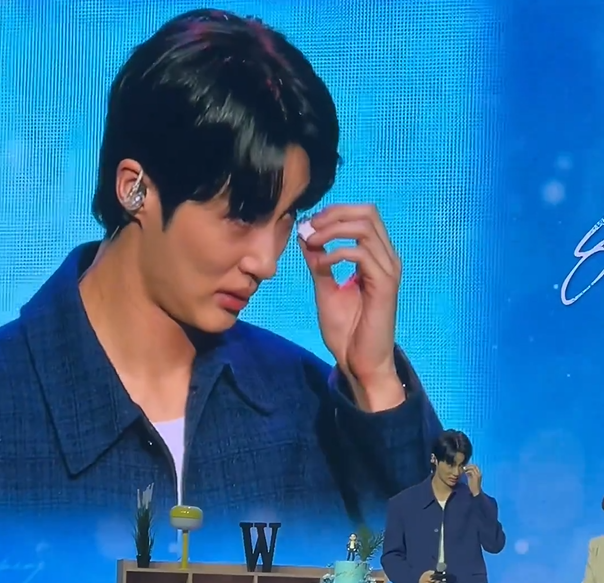Actor Byeon Woo Seok, known for his role in the tvN drama “Lovely Runner,” broke down in tears during his fan meeting in Manila on June 22. The event, part of his 2024 Asia Fanmeeting Tour SUMMER LETTER, took place at the New Frontier Theater and drew a large, enthusiastic crowd.
Byeon Woo Seok’s emotional fan meeting moment
Despite the excitement of meeting his fans, the actor revealed he was not in the best physical condition. He expressed his concerns, saying, “I was worried I wouldn’t be able to fully enjoy this moment with you all because of my health.” His vulnerability resonated deeply with the audience, especially when he credited their energy for helping him enjoy the event. “Your energy helped me enjoy the fan meeting, even though I felt emotional and overwhelmed,” he shared.
@concertqueenph Byeon Woo Seok crying in Manila fanmeet 😭😭 #BYEONWOOSEOK#BYEONWOOSEOKinMANILA #summerletterfanmeeting #byeonwooseok #sunjae #lovelyrunner
The actor’s sincerity and warmth endeared him even more to his supporters. Although fans were thrilled to see him, they also understood the pressure he faces due to his rapid rise in popularity. His demanding schedule and constant public scrutiny have undoubtedly taken a toll on him.
The overwhelming demand for tickets to his fan meetings highlights his soaring popularity. For instance, the upcoming fan meeting in Seoul saw over 700,000 fans trying to secure a spot, causing ticketing platforms to crash. This high demand has unfortunately led to issues like illegal ticket resales and scams.
In addition to these challenges, the actor has had to deal with invasive behavior from some overly zealous fans who have followed him to his lodgings and even overseas. His agency, Varo Entertainment, has responded by promising legal action against any privacy violations.
Despite these obstacles, Byeon Woo Seok’s emotional connection with his fans remains strong. His tears at the fan meeting were a testament to the deep appreciation and love he feels for their unwavering support.
